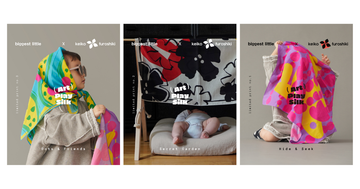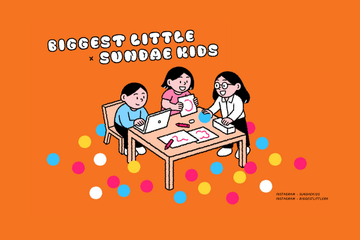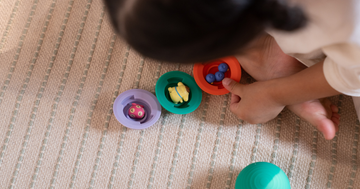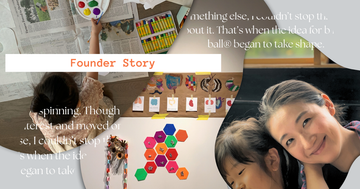Expert Insights for Safe Bath Time Fun: Your Ultimate Guide to Non-Toxic Mold-Free Baby Bath Toys
Bathtime - that special moment of the day when we splash around with our little ones, creating unforgettable memories. We all cherish seeing our kiddos having a blast with their bath toys. But did you know those innocent-looking plastic bath toys might harbor a not-so-pleasant surprise? Yep, mold is just the beginning. There is MORE... In this guide, we'll delve into everything you need to know about bath toy safety: the reasons behind why we should care, how to find non-toxic bath toys that don’t mold, expert cleaning tips, and mold-free alternatives like food-grade silicone bath toys that are safe, easy to clean, and designed for peace of mind.
Why Should You Ditch Plastic Bath Toys for Safer Alternatives?
Let's be real, it's hard to resist those dozen cute animal squirting bath toys for $12.99, which immediately get us thinking about how our little one is gonna learn all their names by the time they start talking.
But here's the scoop: the mold problem.
Plastic bath toys, while fun, can be risky. Mold growth, fueled by humidity and bath products, is a common issue. Bath toys often suffer from poor airflow, particularly those that squirt water, like the iconic rubber duck. While the exterior may dry, the interior remains damp, creating the perfect environment for mold and mildew to thrive.And listen to this:
In a study backed by the Swiss National Science Foundation in 2018, ...researchers found mold and bacteria in over half of commonly used bath toys—especially those that stay damp or can’t be cleaned properly. Furthermore, potentially harmful bacteria were found in 80% of all toys examined, including Legionella and Pseudomonas aeruginosa, the rod-shaped bacterium frequently associated with hospital-acquired infections.
It happened to us - We squeeze our bath toy, and black mildew comes flying out. Gross! Even if we clean and bleach those toys often, it's hard to escape the moldy reality.
Plus The Sidekick: Microplastic Problem
Unfortunately, mold is not the only problem! Just as your little one begins to thoroughly enjoy bath time, usually around 6-8 months when they can sit up independently, they also reach the stage where they explore by putting everything in their mouth. Yep, that includes those adorable plastic toys.
Chewing on plastic toys can release harmful chemicals into your little one's bodies. The study conducted by researchers from Department of Pediatrics and Department of Environmental Medicine, NYU School of Medicine, published in the journal Environmental Science and Technology Letters, found that some 1-year-olds possess, more than 20 times polyethylene terephthalate (PET) in their bodies than those found in adults.
The soft and pliable nature of plastic toys makes them particularly susceptible to being bitten or chewed by curious little ones, increasing the likelihood of exposure to these harmful substances.
“Those are a really big deal because they are often endocrine-disrupting chemicals, which means that they affect development and reproduction," states Anna Lewis, a doctoral candidate in civil and environmental engineering at Duke University."
- Quote from Verywell Family
These findings paint a clear picture: the very toys meant to comfort and entertain our babies during bath time can pose hidden risks. Whether it's mold quietly growing inside sealed plastic or microplastics and endocrine-disrupting chemicals leaching into your baby’s mouth, the everyday bath toy deserves a second look. As parents, we want to give our children the freedom to explore—without compromising their health. That’s why it’s worth considering safer, non-toxic bath toys made from materials designed to resist mold, avoid harmful chemicals, and offer peace of mind with every splash.
Best Mold-Free, Non-Toxic Bath Toys: What to Look For
When seeking safer and non-toxic substitutes for traditional plastic bath toys, natural rubber and food-grade silicone stand out as top contenders.
Natural Rubber
Natural rubber bath toys offer a compelling choice. Derived from latex harvested from rubber trees, natural rubber eliminates the risk of harmful chemicals. Additionally, it boasts durability. However, there are some drawbacks to consider: they may not be suitable for babies with latex allergies, and they typically require hand washing due to low heat tolerance.
It’s also important to note that if a natural rubber toy has holes and cannot be opened for thorough cleaning, it may still trap moisture inside—making it vulnerable to hidden mold growth over time.
Food-Grade Silicone
Conversely, food-grade silicone emerges as a superior alternative, providing dishwasher-safe convenience and effortless cleaning.
Why food-grade silicone is ideal for bath time:
-
Naturally non-toxic and BPA-free
-
Doesn’t leach chemicals, even when chewed
-
Dishwasher-safe and easy to keep mold-free
-
Ideal for babies who mouth everything
Versatile options like b is for ball® offer superior squirting, splashing, and scooping fun all in one. With its clever 2-part design, cleaning is a breeze. Simply open it up and place it upside down in the dishwasher to keep mold at bay. Besides its bath time benefits, b is for ball® can also serve as an outdoor water toy, offering versatility and entertainment beyond the bathroom.
How to Keep Bath Toys Mold-Free: 3 Expert Tips
Choosing the right toy is half the battle. But even the best mold-free bath toys need proper care. Here’s how to keep your bath toy bin clean and safe:
-
Tip # 1: Regular Cleaning
Shobha Bhaskar, MD, a pediatric hospitalist with St. Louis Children's Hospital and Washington University School of Medicine, suggest that parents should clean bath toys regularly to prevent mold from growing on or inside them.
"Ideally, if you see mold in a bath toy, it should be thrown away. If it is a special toy that you want to keep, then it can be cleaned by putting the toy in a mixture of ¾ of a cup of bleach and one gallon of water. You’ll want to soak the toy overnight and then remove it from the solution and let it air dry completely. If you do not see or smell any mold on the toy, it is safe to go back in the bath, but monitor carefully for any mold regrowth." - Shobha Bhaskar, MD
-
Tip #2: Proper Storage
Safeguard your bathtime toys and store them in a parched and well-ventilated location to preempt moisture accumulation. Shun leaving toys in the bathtub or shower where they continue to accumulate water.
-
Tip #3: Replace When Needed
Keep a vigilant eye on your child or baby's bath toys and supplant them upon discerning signs of mold or deterioration. Opt for toys engineered to be mold-resistant, capable of withstanding moisture and frequent usage.
Creative Ways to Make Bath Time More Playful and Meaningful
In addition to selecting mold free bath time toys and maintaining a warm and hygienic environment for your baby or kids' baths, there are several other ways to enrich your child or baby's bath time experience
-
Sensory Play:
Stimulate sensory exploration by introducing various textures and materials during bath time. Consider incorporating bath bombs, foam letters, or textured washcloths to engage your child's senses. With its thoughtfully designed sensory patterns on each ball, the b is for ball® - 3-ball set offers a dynamic sensorial experience for your little one.
-
Incorporate Educational Activities:
Use bath time as an opportunity to introduce educational concepts to your child. Teach counting, letter recognition, and color identification using bath toys and accessories. For instance, you can fill one b is for ball™ with water and leave another one empty, allowing your child to observe the concepts of "sinking" and "floating."
-
Interactive Activities Between You and Your Little Ones:
Foster bonding and laughter during bath time through interactive games like "peek-a-boo" or "squirt contest." Remember, your interaction with them is fundamental to their social and emotional well-being.
Phew, what a ride! Thanks for sticking with us! So, here's the deal: moldy plastic bath toys? NAH! By switching to safer and easy-breezy care options like food-grade silicone, you'll keep bath time both fun for your kiddos and worry-free for you. Oh, and don't forget to keep those toys clean and stored properly to avoid any moldy surprises. With a little TLC and some awesome bath toys, you'll be giving your little one hours of safe and super fun playtime.







